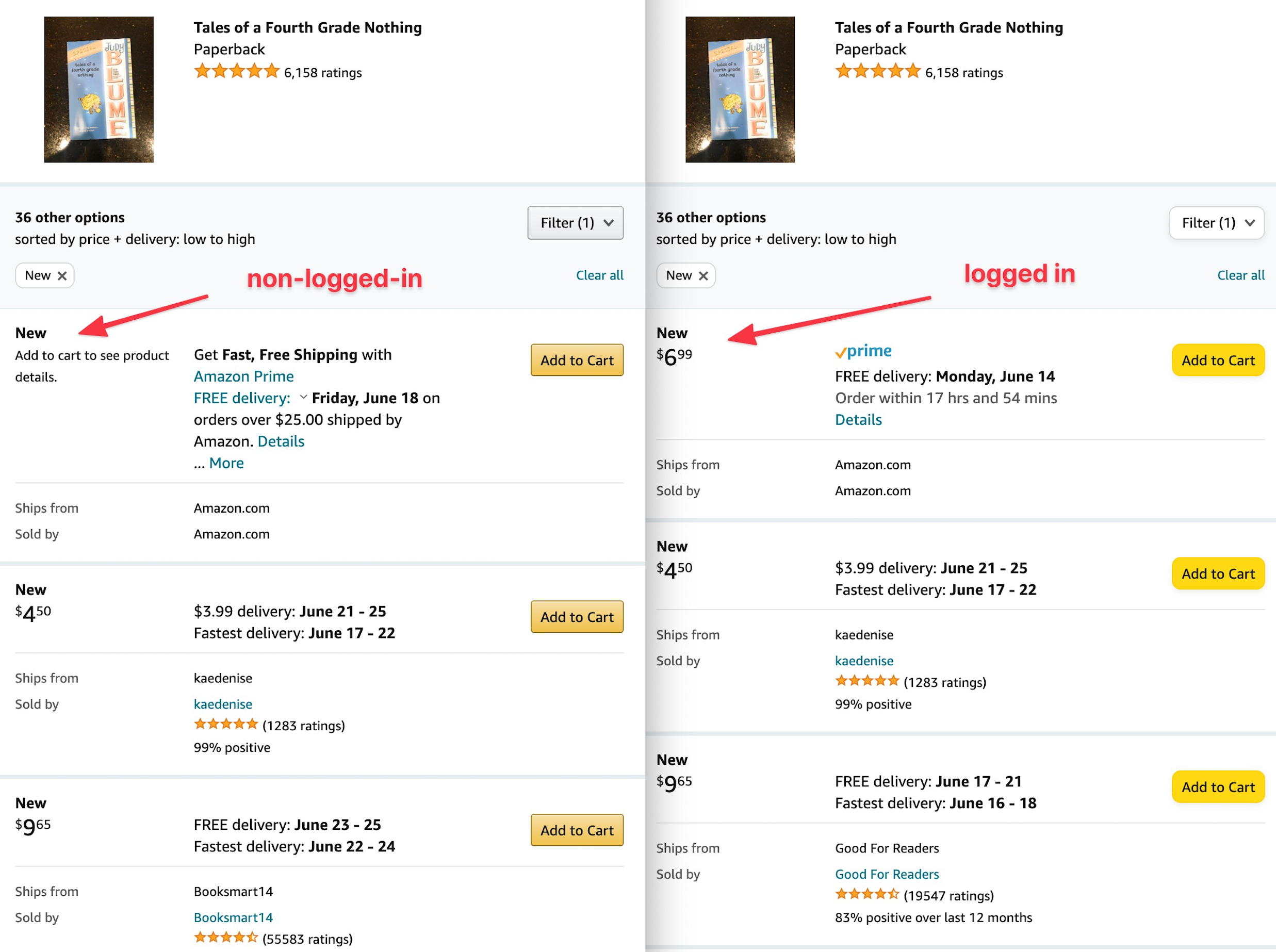Often our users are faced with the problem of the hidden price on the Amazon listing – the listing looks as usual, but you can see the price of an item from Amazon (and sometimes other sellers on the listing) only by adding the item to the cart. Or, in some cases, you need to log into your buyer’s account. Obviously, if you add a supplier with a hidden price to the inventory link, the system will not be able to display the price, and consequently the availability of such a product.

In most cases, the reason for the hidden price is the MAP (minimum advertised pricing) policy. This is the lowest price a retailer can advertise for sale, and is based on an agreement in which the manufacturer sets a lower price limit for advertising to its resellers. MAP programs may take the form of a unilateral policy imposed by the manufacturer or an agreement between the manufacturer and its resellers. MAP programs are often part of a coordinated advertising strategy in which the manufacturer agrees to reimburse some or all of its resellers’ advertising expenses for advertisements that do not list a price below the one set by the manufacturer. This does not apply to the price at which a seller can actually sell a product in their store, but only to the lowest price that can be displayed on a website, in a store, or in an advertisement. This is perfectly legal under U.S. antitrust statutes, since minimum advertised pricing only relates to “advertised” pricing and does not tell a retailer what they can sell it for in their store. MAP policy protects manufacturers by not allowing product undervaluation and brand erosion. Manufacturers often use services that track and find sellers who advertise products at a price below MAP. If such sellers are identified the manufacturer has the legal right to pull their products from store and restrict from selling them again. It is the best practice to honor and follow MAP policies. It speaks of good partnerships, and motivates the vendor or manufacturer to help when it’s needed — like taking back stock when it does not sell. In some countries (for example, the USA and Canada), compliance with the MAP is required at the legislative level, and violations are prosecuted by law.
MAP and Online Sales
Do online retailers have to follow MAP as well? Absolutely. However, online retailers have figured out a workaround that allows them to sell below MAP online. The Federal Trade Commission (FTC) says that the price displayed in a secure or encrypted shopping cart isn’t subject to MAP because it’s technically not advertising. So in an online world, the price paid by a customer may legally end up being lower than MAP.
Is this fair? Well, online retailers believe it is. They simply add a disclaimer that states “price displayed in shopping cart.” And then the actual price to be paid is displayed there versus on the product’s page on the website.
MAP practice at Amazon
Often Amazon itself uses this loophole to hide the particularly attractive prices for its offerings. But it is also possible to set the MAP price for the offer by third-party sellers on Amazon (usually by uploading a Flat file). And if the current selling price of the product is lower than the specified MAP, the listing will display “Add to cart to see product details“ instead of the actual price. But in practice, this does not always work, since Amazon has the final say. If they have information about another MAP for that product, then the current seller price most likely will be displayed, regardless of the data that was uploaded. This was probably due to so-called “MAP spammers” who displayed “Add to cart to see product details“ for each of their products, so that customers think they are getting a great deal, when in fact their prices were not so good like a Buy Box seller.
Why is it important?
Based on the above information – before adding a supplier from Amazon to the inventory link in the system (especially if the supplier is Amazon itself with an attractive low price), make sure that this price does not fall under the MAP policy. To do this, it is best to log out of the buyer’s account and check if the Amazon price is displayed on the listing (or open the listing in anonymous browser mode, for example, Incognito mode in Google Chrome). Since, if the selling price of a product is hidden and visible only in the cart, the system will not be able to monitor such a supplier in the inventory link, and it will be displayed as Out of stock. As a result, the inventory link will be inactive.
